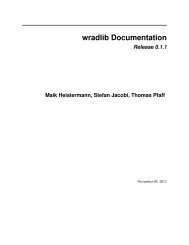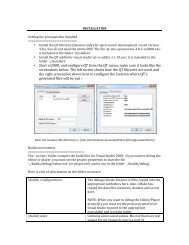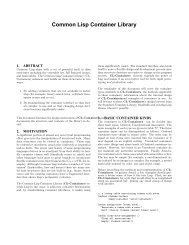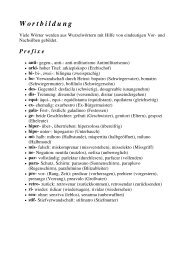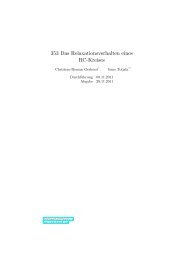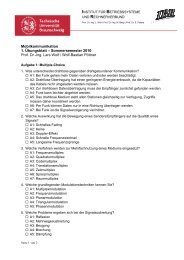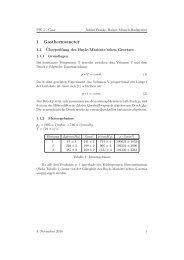P-Technique Demonstrated in Determining ... - Bitbucket
P-Technique Demonstrated in Determining ... - Bitbucket
P-Technique Demonstrated in Determining ... - Bitbucket
Create successful ePaper yourself
Turn your PDF publications into a flip-book with our unique Google optimized e-Paper software.
RAYMOND B. CATTELL, A. K. S. CATTELL, AND R. M. RHYMER 271<br />
<strong>in</strong>terest<strong>in</strong>g tests from (a).<br />
1. Salivary pH (2).*--Measured, positively for alkal<strong>in</strong>ity, by a<br />
standard pH meter.<br />
2. Disposition Rigidity or Perseveratian (8).--Two sub-tests<br />
only. (a) Same sentence written with forward (normal) and with<br />
backward movement of pencil; (b) multiplication of numbers <strong>in</strong> ord<strong>in</strong>ary<br />
way and multiplication <strong>in</strong> which letters stand for numbers.<br />
The sentence and the code were altered every day. Speed of the old<br />
activity was divided by speed of the novel activity, accord<strong>in</strong>g to disposition<br />
rigidity f<strong>in</strong>d<strong>in</strong>gs (8). One m<strong>in</strong>ute was spent on each of four<br />
activities. The second and novel test was rejected later as not correlat<strong>in</strong>g<br />
with the standard motor rigidity test.<br />
3. Myok<strong>in</strong>esis (4).--The work of Johnson (13) and of Mira<br />
(14) suggests that magnitude and variability of movement may relate<br />
to surgency-desurgency (F factor) or to emotional adjustment<br />
(C factor). As <strong>in</strong> Mira's technique, S with eyes closed drew lefthanded<br />
four rows of ten l<strong>in</strong>es side by side with the stroke (a) downward<br />
(b) upward (c) downward (d) upward. (a) and (b) were estimated<br />
to be one, and (c) and (d) two <strong>in</strong>ches <strong>in</strong> length. The mean<br />
length of l<strong>in</strong>e <strong>in</strong> four rows was used here, though other <strong>in</strong>dices will<br />
be tested later.<br />
4. Reaction time (5).--To light <strong>in</strong> dark box: (a) ten with a<br />
warn<strong>in</strong>g signal two seconds before light; (b) ten with irregular warn<strong>in</strong>g<br />
<strong>in</strong>terval of 1 to 3 seconds; mean of both.<br />
5. Ratio of Reavtion Times (6).--Mean time for regular warn<strong>in</strong>g<br />
divided by time with irregular warn<strong>in</strong>g.<br />
6. Fluency and Thematic Apperception (7).--(a) Words <strong>in</strong> one<br />
m<strong>in</strong>ute complet<strong>in</strong>g a story <strong>in</strong>dicated by an open<strong>in</strong>g sentence (different<br />
each day) ; (b) words <strong>in</strong> two m<strong>in</strong>utes <strong>in</strong> one T.A.T. picture when<br />
<strong>in</strong>structed to make a dramatic story; (c) draw<strong>in</strong>gs <strong>in</strong> one m<strong>in</strong>ute on<br />
each of two fluency cards (7).<br />
7. Reversible Perspective (3).- Uncontrolled cube reversal,<br />
number of reversals <strong>in</strong> two m<strong>in</strong>utes' fixation.<br />
8. Psyvhogalvanic Reflex Resistance (not f<strong>in</strong>ally factorized<br />
here.) Absolute resistance 15 m<strong>in</strong>utes after be<strong>in</strong>g connected to apparatus.<br />
* The number <strong>in</strong> parentheses refers to the number of this variable <strong>in</strong> the factor<br />
table, page 284.





